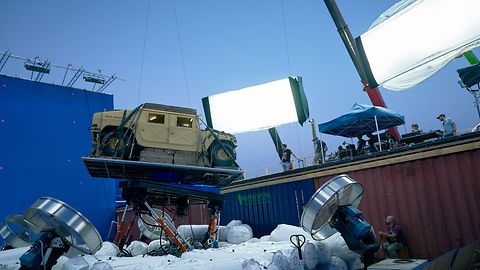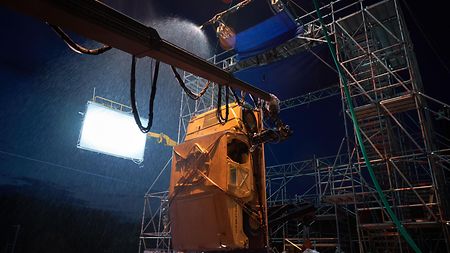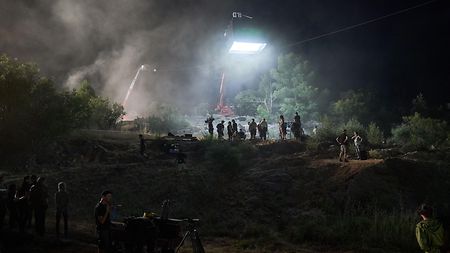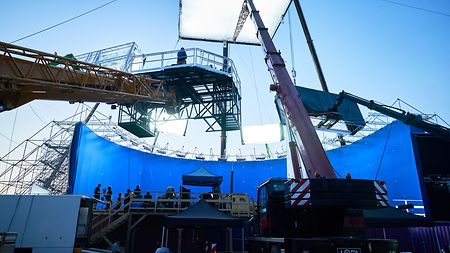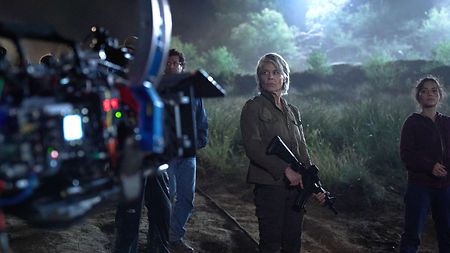How was working with DP Ken Seng?
I met Ken at Columbia College Chicago film school. We were both born and raised in Chicago, and we very much fit right in to the Chicago stereotype: we can both be loud and smart asses, big personalities at times, and we very much like poking fun at each other, as most friends do.
That helps when we're bouncing ideas off of each other. Having the same interests and personality, everything becomes very shorthand. At this point in our working relationship, after the scene is blocked we pretty much already know what we're going to do, lighting-wise, and most times don't even need to talk about it--I just get to work. We both have the same lighting interests, we have the same 'eye,' and lighting style, and like the same looks, so that makes everything easier as well.
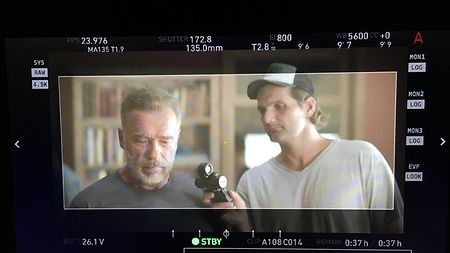
An on-set monitor shows gaffer Brian Bartolini with Arnold Schwarznegger
